
CARARA NATIONAL PARK - TARCOLES BRIDGE
WEATHER: all day sunshine, very hot and humid.
W ae had hot and sticky day in Carara with some magical sightings and despite the dense rainforest we managed to see quite a few species.
Scarlet Macaws shrieked their way over our hotel grounds, making their way from the mangrove roost site to the forest feeding grounds. Over 100 flew over. After our 7am breakfast we drove down to the Carara national park and started our birding on the main track.
Carara has such a diverse avifauna because the habitat is so diverse, it is where the dry forest of the north west meets the rain forest of the south and species, specific to both habitats, overlap. Some of the ancient trees in this well established national park are enormous!

an enormous Fig Tree
We spent 4 hours walking the main track and some side loops and Jason our guide was in his element, his ability to see birds in the dense foliage is amazing. We quickly listed a few 'ant birds', such as Black-hooded Antshrike, Dot-winged Antwren, Dusky Antbird and Cherstnut-backed Antbird. He then found a Collared Forest-Falcon, how he spotted it I will never know!
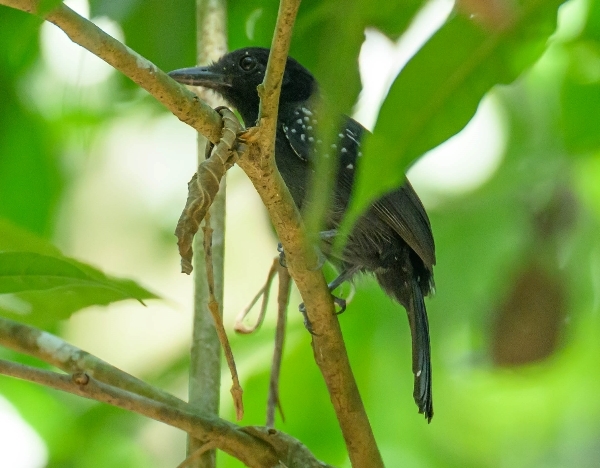
Black-hooded Antshrike - Richard 'birthday boy' Pettett
A few hummers went down on the list; Charming Hummingbird and Blue-throated Goldentail were new for us and Scaley-breasted Hummingbird, Purple-crowned Fairy and Long-billed Hermit had already been recorded.
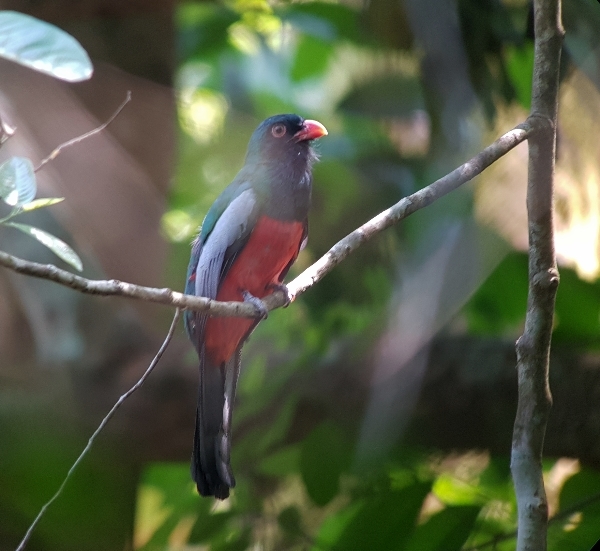
a Baird's Trogon
We walked along a very flat, wide track and every few hundred meters Jason heard or saw something flitting about in the forest. Rufous Motmot, Baird's and Slaty-tailed Trogons, Rufous-tailed Jacamar, Rufous Mourner, Plain Xenops, Wedge-billed and Streak-headed Woodcreepers are just some of the sightings.
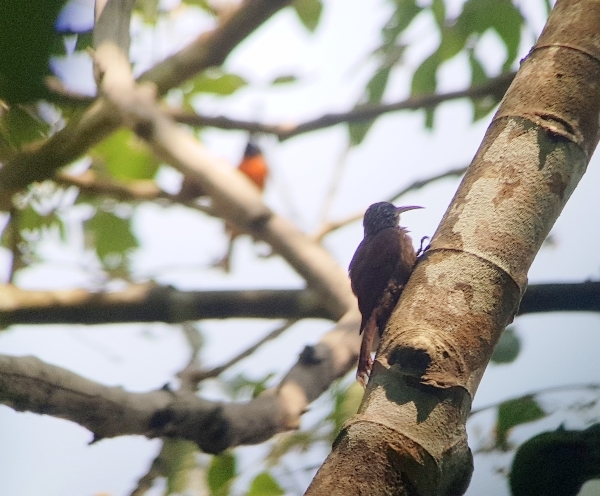
a Streak-headed Woodcreeper
It was mind boggling at times! We were then taken to a site where Orange-collared Manakins perform a 'lek'. We saw two or three males and a single female during the time we were there, what astunning bird that one is, wow!! White-winged Becard, Ruddy-tailed Flycatcher, Common and Slate-headed Flycatchers, Yellow-olive and Yellow-bellied Flycatchers were seen too.
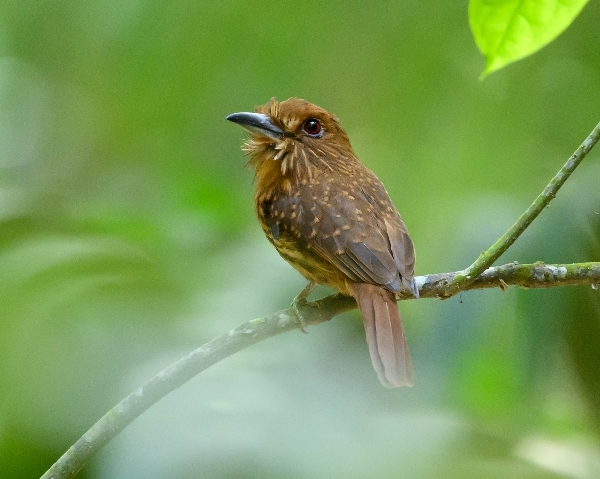
White-whiskered Puffbird - by Richard Pettett

on the forest trail in Carara National Park
As we walked back towards the car park Jason pulled out a couple of real goodies, first he found a party of White-shouldered Tanagers and then a Royal Flycatcher.

Royal Flycatcher - taken by Graham Ella
For lunch we drove north of the Tarcoles to a roadside restaurant and on the way back we stopped for a walk on ther famous Tarcoles Brdige to look at the gigantic Amercian Crocodiles lazing on the muddy bank below. We also saw Common Basilisk Lizards, Green Herons, Great-tailed Grackles, Great & Snowy Egrets.
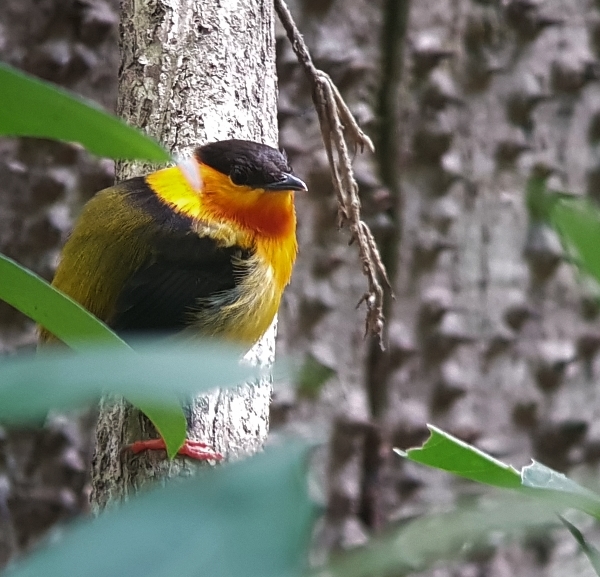
Orange-collared Manakin
Our afternoon birding started around 2:30pm, it was still hot and humid, we took a totally different trail this time and found even more species. A Great Tinamou was one of the first birtds but only a few at the front of the group got to see it. We all then watched a Velvety Manakin (formerly Blue crowned) and at a bridge over the river we found a second Collared Forest-Falcon, a Golden-naped Woodpecker, Northern Waterthrush and Spotted Sandpiper.

record shot of the Velvety Manakin by Graham Ella

Collared Forest-Falcon

Golden-naped Woodpecker - Richard 'birthday boy' Pettett
The last site we were led was the icing on the cake, a small stream where Red-capped Manakins came down to bathe! It was such a great show, three males were in view along with a female and a Chestnut-sided Warbler.

an amazing bird - the Red-capped Manakin by Richard Pettett
On the way back from the walk Jason stop to point out a Riverside Wren and then he heard an Antpitta calling. We tracked the bird down to a specific area and it was Rob who spotted it and Tony who got a picture of it. It was an amazing bird to finish off the day with.

Streak-chested Antpitta - by Tony Moore
We left the park at 5pm and drove back to our hotel, where a cold shower was enjoyed by all us, dinner was at 7pm. We are now 10 days into our trip and our tally is approaching 400 species.
